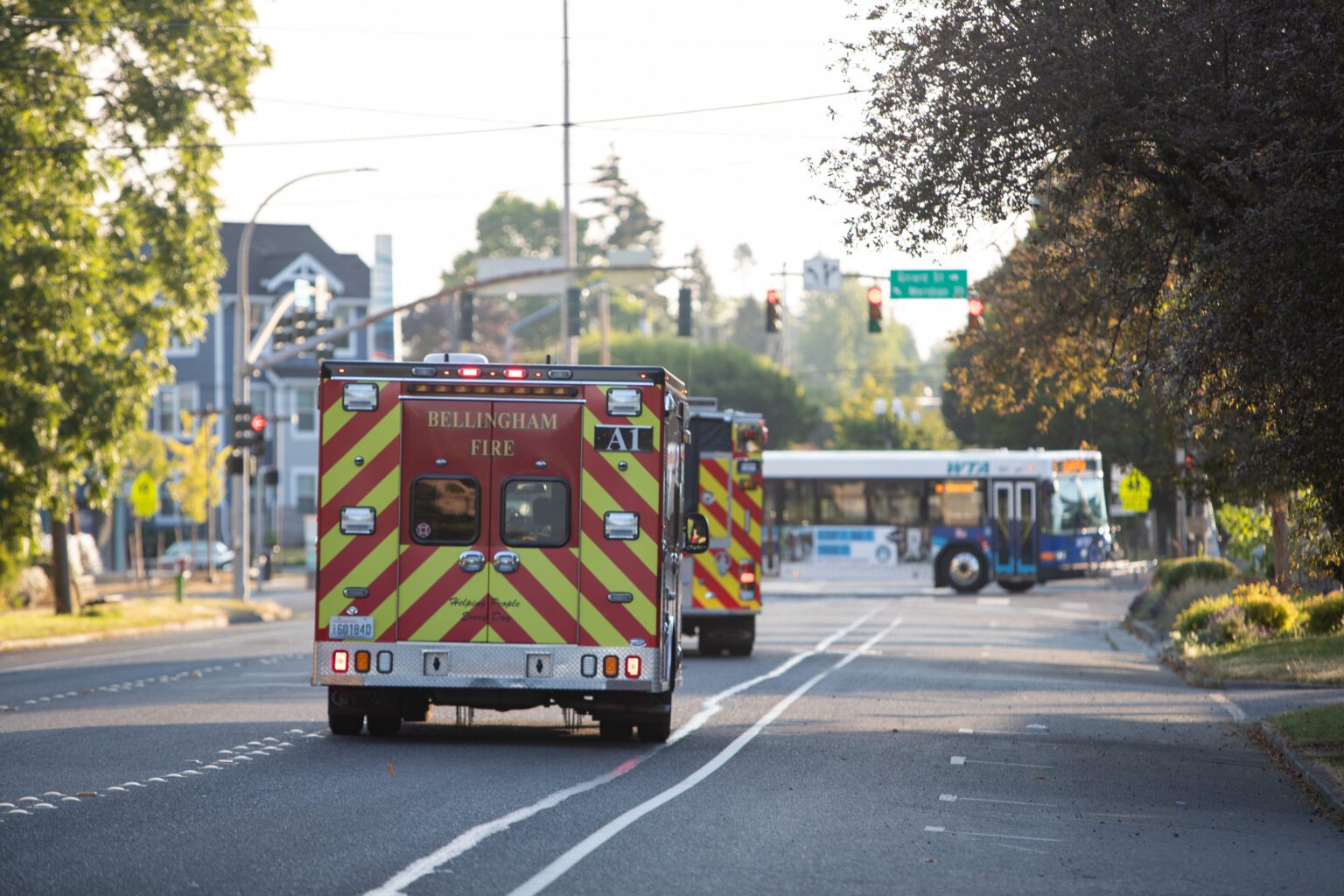The debate this summer about the emergency medical services levy headed for the November ballot went beyond deciding how much money EMS needs. Whatcom County Council member Carol Frazey added another dimension to the deliberations: how to bring diversity to a mostly white-male roster of first responders.
Bellingham’s fire chief agrees that more must be done to recruit more diversity into the firefighting ranks, while some rural fire chiefs question whether that’s practical.
Frazey added language to the levy’s six-year spending plan that calls on the countywide EMS system to set targets for diversifying staff and tracking progress on those goals. The levy plan also calls on the Bellingham Fire Department and fire districts across the county to figure out how to recruit underrepresented groups, specifically women and people of color.
Chief Bill Hewett, who is in charge of the Bellingham Fire Department and Fire District 8 in Marietta, has embraced the levy language and says his department has made some strides toward greater diversity in recent years.
“Both the County Council and the [Bellingham] City Council have declared racism a public health issue here in our community,” Hewett told the County Council on July 12. “Everything we do, we should have a lens to look at that. That’s why it’s important that (the language) is there.”
Gains in diversity at the Bellingham Fire Department have been modest but measurable. The ranks of uniformed personnel went from 96% white and 96% male in 2015 to 92% white, 90% male at the start of 2022, Hewett said in an interview.
“I’m proud of the BFD and the way that our members have jumped in and are looking for ways to improve,” the chief added in an email.
Firefighter Beth Carroll took the lead in the effort to bring diversity to the department. Carroll, who started in 2011, was the second woman the Fire Department had hired in a 17-year period, she said. After a cohort of nine white males entered the department from the same recruiting class in 2015, she decided to change the department from within.
In 2016, Carroll convinced the local firefighters’ union to form a countywide diversity committee.
“That’s when we really started working on addressing what we thought were barriers to employment,” Carroll said.
Many of the changes in hiring practices that followed came out of Carroll’s committee. The department got results after de-emphasizing a computer-based screening test that favored candidates who could afford to pay the fee and take the test multiple times. The department placed more emphasis on interviews, resulting in the most diverse recruitment class ever in 2019, Carroll said: five women and three men of color out of 12 total.
One of the women and two of the non-white men were fired before completing their probationary period, however — an outcome Carroll said points to a lack of accountability in the department’s diversity efforts.
Women need to be treated fairly, Carroll said, during the 16-week recruit academy that gives newcomers the training they need — along with the tests they must pass — to become full-fledged firefighters.
The academy culture puts women at a disadvantage, Carroll said.
“The bar is, you should know how to do this already,” she said. “The bar isn’t, we are going to teach you how to do this; we’re going to teach you how to utilize your body in a way that works for you.”
In response, Hewett said the academy is changing with an eye to helping women succeed. Recruits are given more time to practice, he said, and trainers “of varying strength and size” show recruits techniques that have worked for them on heavier equipment, including the fire hose or the 24-foot ladder.
Hewett concedes that more must be done to enable women and people of color to even find their way to recruit academy.
The city invested $200,000 in 2022 on recruitment and diversity training. Some of the money went into creating a new 11-member diversity committee comprised of six women and five men. (Carroll left the department in December and is not on the committee.) The committee has started looking for ways to recruit a more diverse applicant pool, Hewett said.
“Recruiting isn’t as simple as sending a couple of firefighters to a job fair,” he said. “We really need to be ‘recruiting’ at an early age … so as people grow up, they can see and hear repeatedly that firefighting could be a career for them.”
Meanwhile, Fire District 7 in Ferndale has found some success in growing a diverse team by getting women and minorities in the door through the district’s volunteer program, chief Larry Hoffman said.
“We don’t have to recruit,” Hoffman said.
Of 83 uniformed staffers in District 7, 13 are women and Hoffman counts an additional 16 as diverse hires based on the color of their skin or their ethnicity — including seven Ukrainians.
“I think we do a good job with our numbers being over 30 percent,” Hoffman said. “People come to us because we’re a nice entry-level department. For people looking for careers, this is a good starting place.”
Hoffman said he wouldn’t know how to recruit people of color because so few live in the Ferndale area.
Jerry DeBruin, chief of Fire District 14 in Sumas, said something similar during a May meeting of the EMS Levy Committee.
“Out here this is not an issue and we do everything we can to include,” DeBruin said. “As far as going out and recruiting a particular group, that may be very challenging, and I would have a hard time with that because I just don’t know where I’d start, honestly.”




